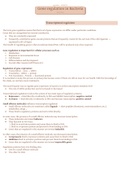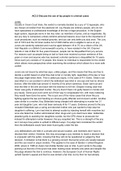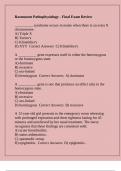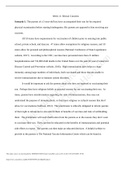Intermolecular forces = the attractive forces between individual molecules
partially broken during state changes
Intramolecular forces = bonds within the molecules
Dipole = a pair of equal and oppositely charged or magnetised poles separated by a distance
London Forces – Temporary Dipole Forces
- Standard for all substances
- Temporary (instantaneous) dipole-induced dipole interactions
- These are weak and only exist for a fraction of a second
- Van der Waal forces are present in all molecules
- increase with molecular mass
- decrease with the roundness of a molecule
1. Random electron movements create a small temporary dipole
2. This induces a similar dipole in neighbouring molecule
3. This creates a small attraction between them
Dipole-dipole Forces – Permanent Dipole Forces
- Different atoms have different electronegativities >> variations in the electron charge density
in different parts of a molecule
- If a molecule is asymmetrical, the variation
produces a dipole where a molecule has a positive
and a negative end (is polar)
- If a molecule is symmetrical, variations in electron
charge density cancel each other out and the
molecule is non-polar
- δ+ = low charge density
- δ– = high charge density
- Oppositely charged dipoles attract each other
- relatively strong attractive force
- E.g. because of the electronegativity difference of Hydrogen and Chlorine, H-Cl molecules are
polar
- The intermolecular forced between polar molecules (London and Dipole) are stronger than
between non-polar molecules (just London)
Melting/boiling points tend to be much higher for polar molecules
Hydrogen bonds (H-bonds)
- Strongest type of intermolecular force
- Occurs between a Nitrogen, Oxygen, or Fluorine and a
Hydrogen that is bonded to Nitrogen, Oxygen or Fluorine
- N, O and F are the 3 most electronegative elements, and
all have lone pairs when bonded
1. When H is bonded to N/O/F, the electrons in the bond are strongly attracted to the N/O/F,
leaving the H very positive
2. The lone pair on the N/O/F is strongly attracted to the positive Hydrogen
Lone pair = nonbonded, a valence shell electron pair associated with 1 atom (not in covalent)
Predicting Molecular Polarity:










